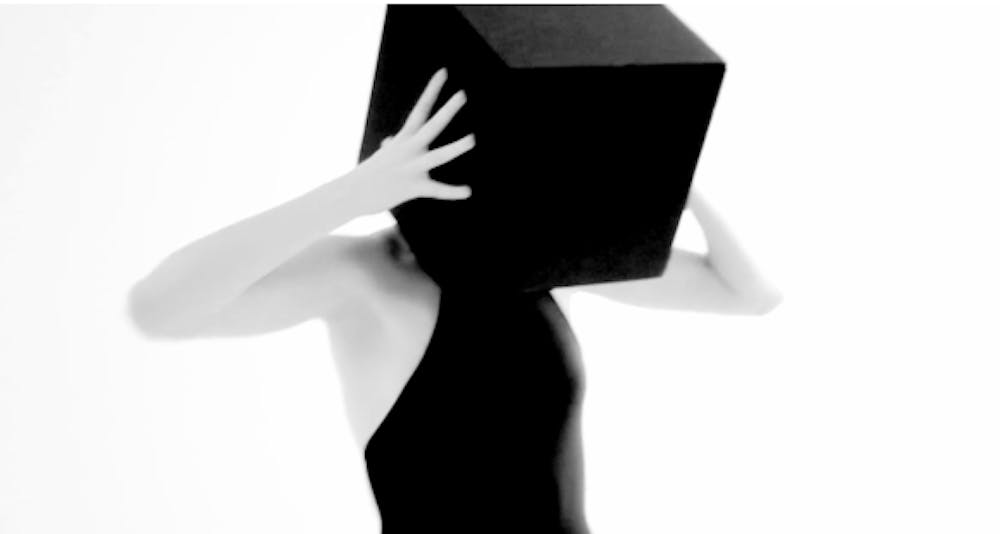Name and Year: Zenas Hutcheson, MFA ’13 Hometown: St. Paul, Minnesota Major: PennDesign Master of Fine Arts, BA Connecticut College (2008) Dance Medium of Choice: Film, Stage and Photography
Street: Do you have any favorite artists? Role Models? Zenas Hutcheson: Viva La [Robert] Venturi! Venturi and [his collaborator and wife] Denise Scott Brown view themselves not as “postmodernists” but as loyal modernists in an information age. I view myself in the same way. Long before I came to Penn, their work was a tremendous influence on my thinking. The concept of the political and cultural implications of a work, in their case a building, and the necessity of reinterpreting the art historical past to suit the needs of your moment is a fundamental pillar of my work.
Street: The first show you choreographed was intended for five men. Do you find that choreographing for one gender is easier than another? ZH: Choreographing across skill level is more difficult than across gender. Talented male dancers are harder to find. I made the piece you refer to, Unseen Enemy, in college. I used a member of the hockey team, a lacrosse player and two theater actors. Thus, it was a real challenge to craft something that would work to their dance abilities. But in Unseen it worked because the show was about a group of ordinary soldiers in Vietnam. Even though the dancers were initially scared and uncertain just as I would be in the middle of a lacrosse field, their vulnerability added a real honesty to the piece.
Street: In terms of your short films, where does your creative process begin? Does the music determine the choreography or vice versa? Do you begin with a theme or does it develop as you go? ZH: My creative process for the stage always begins with a thought about some issue, a few key snippets of movement, some text and a production idea. I view music and choreography as similar to meter in poetry. The rhyme scheme, or the music, can enhance the poem or dance, but must never drive it. With this in mind, the piece is developed over the course of weeks and incorporates things that occur in the moment in rehearsal or on stage.
In creating a film nothing happens in the moment. Each scene and shot must be carefully planned, staged, and rehearsed before it is shot. This is the biggest artistic challenge facing me right now: how to adapt my creative process for stage to film.
Street: What is the significance of the white space that you use in your films? Does it function purely aesthetically, thematically, or a combination of the two? ZH: In the case of Brick Says it serves several functions. Brick Says is about the search and struggle to make form and shape in bodies and buildings. The white background with the dancers in black heightens this sense of form. But on a deeper level there is literally no grey area. The film is high contrast black and white. In this sense it becomes sort of a right or wrong thing. The film was inspired by the architect Louis Kahn. Kahn, one of the greatest architects of the 20th century, was of course a long time PennDesign Professor.
Street: Why is photography your next medium of choice? Do you think dance will influence your work in this field as well? ZH: Dance already has. They are similar in that both involve doing the same mundane thing a thousand times until the time comes when you get something amazing. If you are on stage thinking “how do I do this jump again?” it’s a bad sign. Similarly if you are worried about ISO or something at a shoot or on location, it’s a bad sign, a really bad sign.
Street: What do you see for yourself in the future? ZH: Currently I am in a seminar on Historic Preservation which is directly related to issues of cultural heritage, issues that feature prominently in much of my work. Hopefully I can do something similar at the law school. The study of political and legal philosophy has been a longstanding passion of mine. I would love a chance to choreograph a piece for the Robots Lab.
There is a big push in the art world right now to justify our work and practice as “research.” In many senses this is correct, as David Foster Wallace’s novels come to mind… But in another sense I think it’s dangerous because the implication is that the final work has to be visibly related to the research or that the artist took “logical” steps. This is a bad expectation. We need art precisely because there are things that are beyond rational or reasoned explanation. I leave explanation to the other disciplines. I’m here to make a mess.







